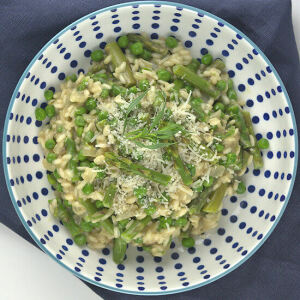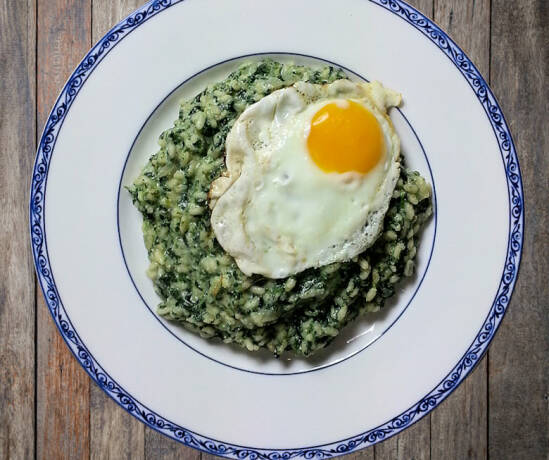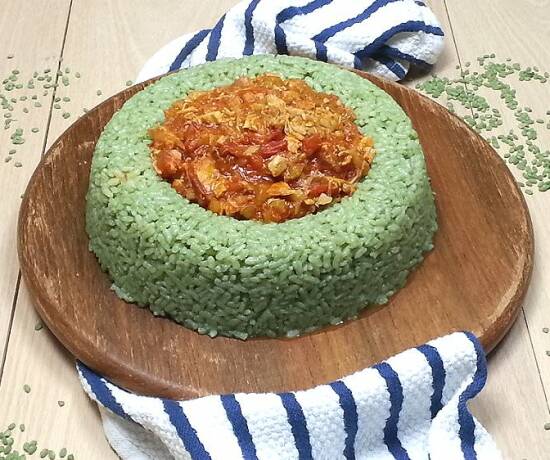Spring time is a lovely time of the year; everything around us is perking up. We are more interested in recipes with fresh vegetables, like this Asparagus and Peas Risotto with Lemon & Tarragon.

A simplified version of this recipe, Risotto with Asparagus, is a dish I make regularly. It is the addition of more veggies (peas in this case), lemon juice and fresh tarragon, that makes it so much more fresh, spring-like.

When making risotto, a few things are important:
- Don’t cook the rice to mush, but also don’t under-cook. Like cooking pasta al-dente, rice also needs to be soft with a little bite to it.
- Cook the vegetables you like to add to the risotto as short as you can, so they keep their vibrant color and are still crunchy, but are not longer raw. This varies of course per vegetable. Overcooked vegetables are dull, have lost flavor and all their nutrients in the process.
- Don’t add too much cheese or too little stock. A dry risotto is usually less pleasant than a more moist version.

There are many combinations you can make when you considering making risotto. Whatever tickles your fancy is worth trying. Remember experiment in the kitchen and you will surprise yourself.
The recipe below is self explanatory and will show you how to make the risotto. Use vegetable stock and you’ll have a vegetarian risotto. When you don’t like to add wine, leave it out, but increase the volume of the stock.
Asparagus and Peas Risotto with Lemon & Tarragon
Ingredients
- 1 bunch asparagus
- 1 cup frozen peas thawed
- 1/2 onion chopped
- 1 tablespoon olive oil
- 1/2 cup carnaroli rice or arborio rice
- 1/4 cup white wine
- 1 3/4 cups vegetable stock or chicken stock
- 2 ounces mascarpone cheese
- salt and pepper
- 1/4 cup parmesan cheese grated
- 1 tablespoon lemon juice
- 1 teaspoon tarragon finely chopped
Instructions
- Wash the asparagus and cut them in 1-2 inch long pieces. Cook them, together with the peas in slightly salted water for about 2-3 minutes. Drain and cool in ice bath, to stop the cooking process.
- Heat the butter to a Dutch oven and sweat the shallots in the butter. Add the rice, stir, coating the rice grains with the hot butter. Allow to cook for a little and wait until the rice grains are making noise and you see the rice becoming translucent.
- Add the white wine and allow it to be absorbed by the rice. Once absorbed, add the stock, ladle by ladle until all liquids are absorbed by the rice.
- When the stock is absorbed, add the mascarpone and the Parmesan cheese. Mix and add the vegetables and allow them to warm up.
- Add salt and pepper to taste, then add lemon juice and tarragon and taste again.
- Divide over 2 plates or bowl, sprinkle with some Parmesan cheese and a few tarragon sprigs.
Notes
Nutrition
Nutrition information is automatically calculated, so should only be used as an approximation.





No Comments